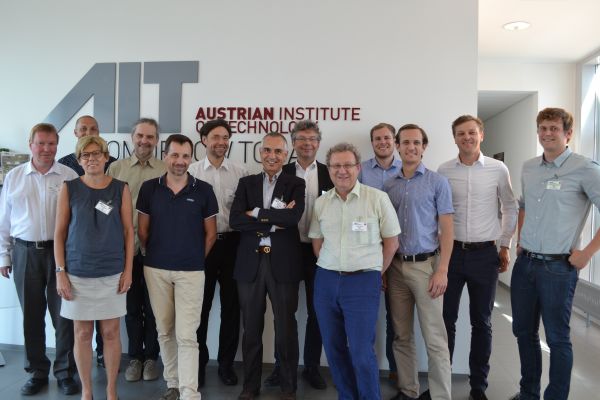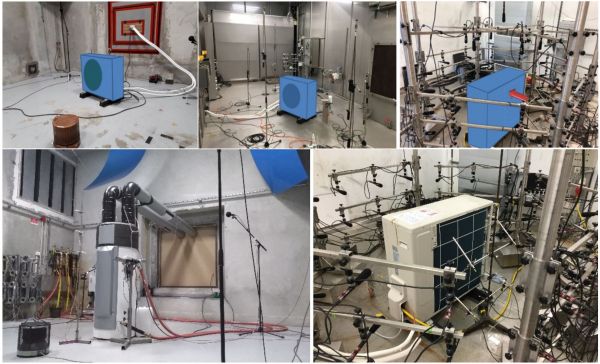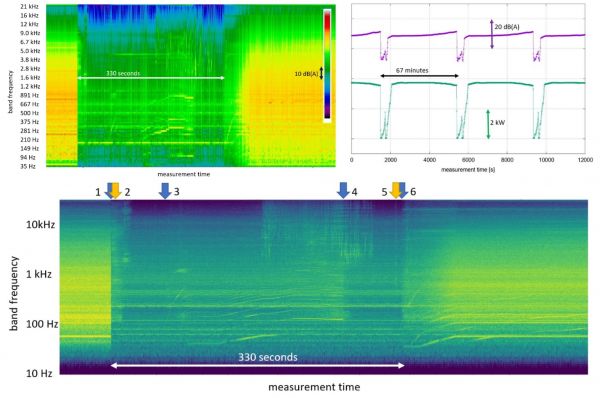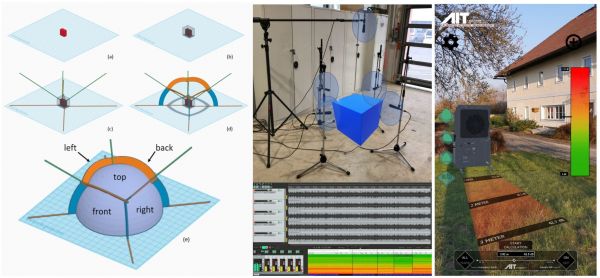IEA HPT Annex 51: Acoustic Signatures of Heat Pumps
Short Description
The IEA HPT Annex 51 project led by the AIT Austrian Institute of Technology, Center for Energy, investigates the acoustic behaviour of heat pumps. More than 20 experts from 15 institutions in six countries are involved in this international project.
The experts are using innovative measurement and data analysis methods to investigate influencing factors that affect the sound emissions of heat pump systems. The effectiveness of concrete noise protection measures is analysed. The most important findings so far can be summarised as follows:
- Low-noise fan types cause up to 8 dB(A) less acoustic emissions than loud fan types.
- Reductions of up to 8 dB(A) can also be achieved by damping the fan blades.
- By optimising the fan's operating point, acoustic emissions can be reduced by up to 4 dB(A).
- Optimisations in the geometry of the evaporator enable sound reductions of up to 5 dB(A).
- Reduced sound emissions of up to 4 dB(A) are achieved with indoor air heat pumps by sound-absorbing air ducts.
- Deflections of such air ducts can serve as reflection sound absorbers and thus reduce sound emissions by up to 2 dB(A).
- With additional splitter silencers installed in the deflectors, this value can be increased to 2.5 dB(A).
- Improving the airflow near the fan by means of a diffuser leads to reductions of up to 2 dB(A).
- Fitting a compressor bonnet allows a reduction in acoustic emissions of only 1dB(A).
- Delaying the ice formation on the evaporator by means of anti-ice coatings did not result in any sound reductions, but less frequent icing leads to less frequent disturbing noises, which draw attention to the heat pump.
Within the framework of the international cooperation, the following results were developed in particular:
- Overview of the legal framework for noise emissions from heat pumps in Austria and the EU
- Compilation of the most important technological factors influencing the acoustic signatures of heat pumps
- Psychoacoustic evaluation index for the description of heat pump sounds
- Guidelines and recommendations for national stakeholders
- Training materials for designers and installers
The deliverables of the international project are available at the website of IEA HPT Annex 51. All German deliverables of the national Austrian IEA HPT Annex 51 can also be found there.
Project Images
Terms of use: The pictures listed underneath the header “Project Pictures” originate from the projects in the frame of the programmes City of Tomorrow, Building of Tomorrow and the IEA Research Cooperation. They may be used credited for non-commercial purposes under the Creative Commons License Attribution-NonCommercial (CC BY-NC).
Participants
Austria (lead), Denmark, France, Germany, Italy, Sweden
Contact Address
Operating Agent
Christoph Reichl
AIT Austrian Institute of Technology GmbH
Giefinggasse 2, 1210 Wien
Tel. +43 (0) 50550-6605
E-Mail: christoph.reichl@ait.ac.at
www.ait.ac.at
Project partners
René Rieberer
Technische Universität Graz
Institut für Wärmetechnik
Inffeldgasse 25/B, 8010 Graz
Tel.+43 316 873 - 7302
E-Mail: rene.rieberer@tugraz.at
www.tugraz.at/institute/iwt
Christian Kasess
Österreichische Akademie der Wissenschaften
Institut für Schallforschung
Wohllebengasse 12-14
1040 Wien
Tel. +43 (0)1 51581 2501
E-Mail: christian.kasess@oeaw.ac.at
www.oeaw.ac.at
Thomas Bednar, Simon Hinterseer
TU Wien
Institut für Werkstofftechnologie, Bauphysik und Bauökologie
Forschungsbereich Bauphysik, Campus Science Center
Lilienthalgasse 14 - Gebäude OC, 1030 Wien
Tel. +43 1 58801 - 207 200
E-Mail: thomas.bednar@tuwien.ac.at; simon.hinterseer@tuwien.ac.at
www.bph.tuwien.ac.at





